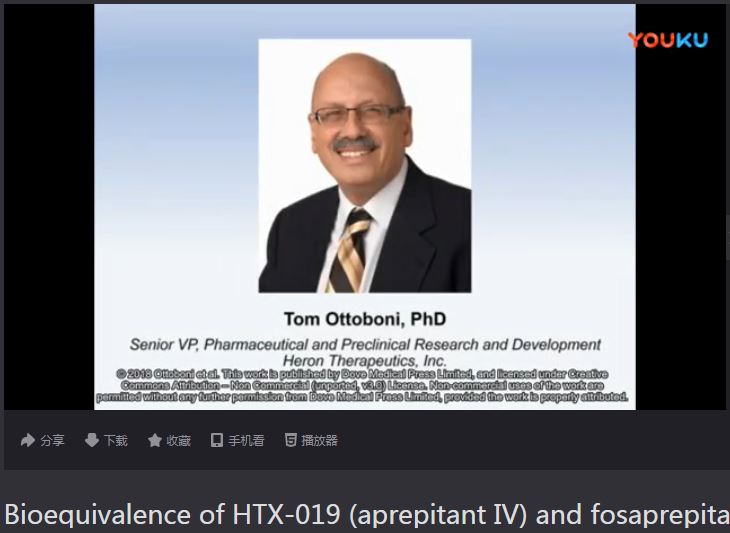9 0 6 7 6
论文已发表
注册即可获取德孚的最新动态
IF 收录期刊
- 2.6 Breast Cancer (Dove Med Press)
- 3.9 Clin Epidemiol
- 3.3 Cancer Manag Res
- 3.9 Infect Drug Resist
- 3.6 Clin Interv Aging
- 4.8 Drug Des Dev Ther
- 2.8 Int J Chronic Obstr
- 8.0 Int J Nanomed
- 2.3 Int J Women's Health
- 3.2 Neuropsych Dis Treat
- 4.0 OncoTargets Ther
- 2.2 Patient Prefer Adher
- 2.8 Ther Clin Risk Manag
- 2.7 J Pain Res
- 3.3 Diabet Metab Synd Ob
- 4.3 Psychol Res Behav Ma
- 3.4 Nat Sci Sleep
- 1.9 Pharmgenomics Pers Med
- 3.5 Risk Manag Healthc Policy
- 4.5 J Inflamm Res
- 2.3 Int J Gen Med
- 4.1 J Hepatocell Carcinoma
- 3.2 J Asthma Allergy
- 2.3 Clin Cosmet Investig Dermatol
- 3.3 J Multidiscip Healthc

Bioequivalence of HTX-019 (aprepitant IV) and fosaprepitant in healthy subjects: a Phase I, open-label, randomized, two-way crossover evaluation
Authors Ottoboni T, Keller MR, Cravets M, Clendeninn N, Quart B
Received 2 November 2017
Accepted for publication 5 January 2018
Published 1 March 2018 Volume 2018:12 Pages 429—435
DOI https://doi.org/10.2147/DDDT.S155875
Checked for plagiarism Yes
Review by Single-blind
Peer reviewers approved by Dr Palas Chanda
Peer reviewer comments 3
Editor who approved publication: Dr Tuo Deng
Introduction: Fosaprepitant, an intravenous (IV) aprepitant prodrug for
chemotherapy-induced nausea and vomiting prophylaxis, is associated with
systemic and infusion-site reactions attributed in part to its surfactant,
polysorbate 80. HTX-019 is an IV aprepitant formulation free of polysorbate 80
and other synthetic surfactants.
Materials and methods: This open-label, single-dose, randomized, two-way
crossover bioequivalence study compared pharmacokinetics and safety of HTX-019
and fosaprepitant. Healthy subjects received single-dose HTX-019 (130 mg) or
fosaprepitant (150 mg) IV over 30 min, with ≥7-day washout between doses. Blood
samples were evaluated for pharmacokinetics and bioequivalence; safety
evaluation included treatment-emergent adverse events (TEAEs) and serious
adverse events. Ninety-seven of one hundred enrolled subjects completed the
study.
Results: Baseline characteristics were comparable between
treatment sequences. For HTX-019, mean (percent coefficient of variation) area
under the curve (AUC) from time 0 to time of last measurable plasma concentration
(AUC0-t), AUC from time 0 to infinity (AUC0-inf), and plasma concentration at 12 h (C12 h) for HTX-019 were 43,729 h*ng/mL (32.7), 45,460
h*ng/mL (36.8), and 988.4 ng/mL (27.5), respectively; corresponding
fosaprepitant values were 44,130 h*ng/mL (32.0), 46,163 h*ng/mL (36.6), and
1,022 ng/mL (28.5). Also, 90% CIs (94.186–101.354) were within bioequivalence
bounds (80%–125%). Within 1 h following infusion start, one (1%) HTX-019
recipient reported one TEAE, while 20 (20%) fosaprepitant recipients reported
32 TEAEs. Dyspnea occurred in three fosaprepitant recipients (at <1 min in
two subjects and at 18 min in one subject, considered study drug related) and
one HTX-019 recipient (at 120 h, associated with a respiratory tract infection
and considered not related to the study drug). No severe TEAEs, serious adverse
events, or deaths occurred; all TEAEs resolved.
Conclusion: HTX-019 was bioequivalent to fosaprepitant and
may provide a safer alternative to fosaprepitant for chemotherapy-induced
nausea and vomiting prophylaxis.
Keywords: antiemetics,
polysorbate 80, safety, surfactant
摘要视频链接:Bioequivalence of HTX-019
(aprepitant IV) and fosaprepitant
